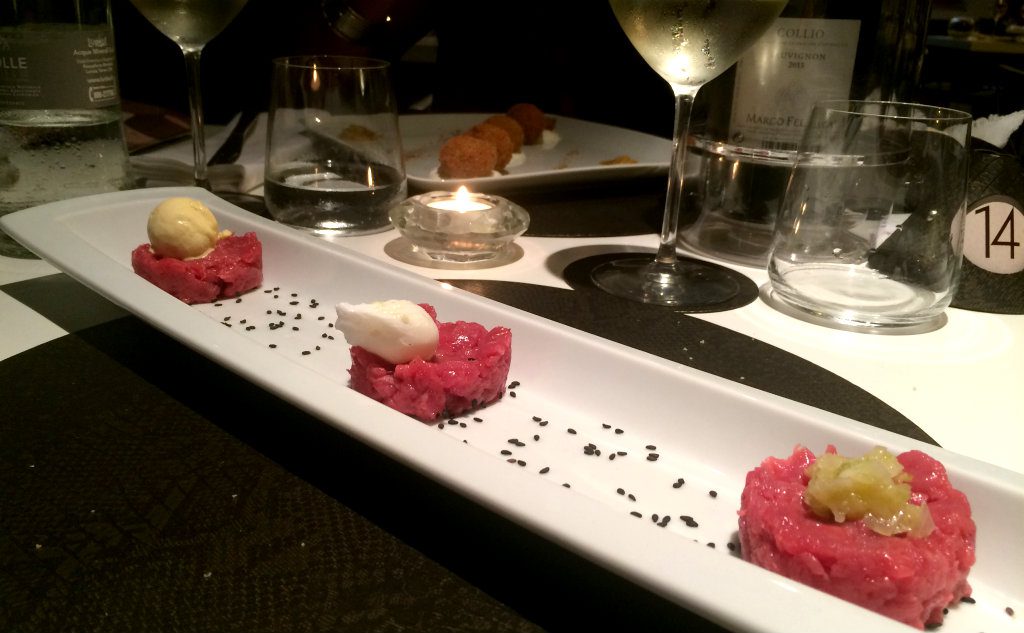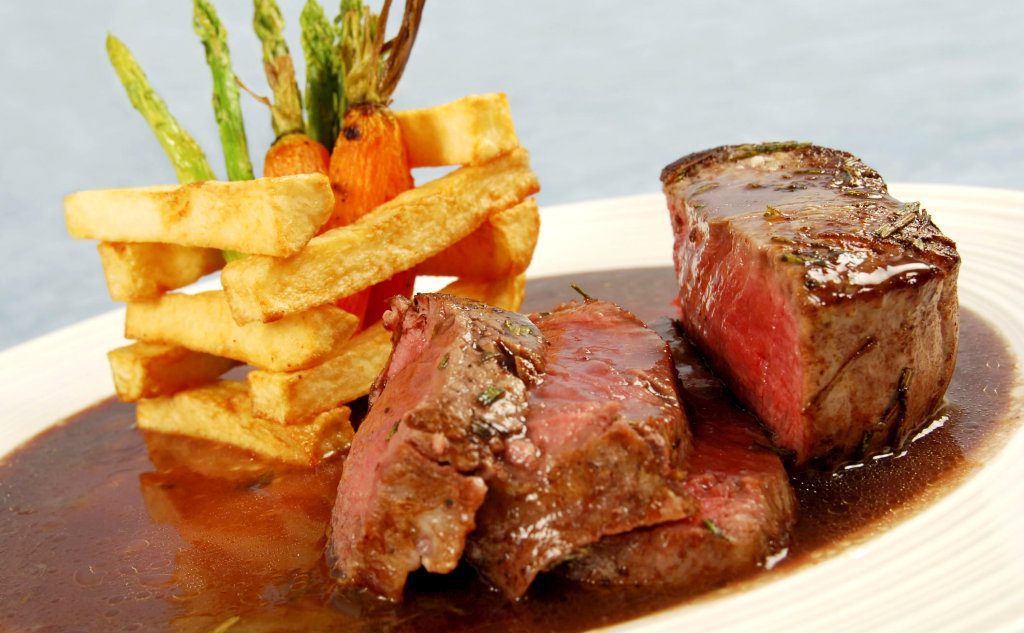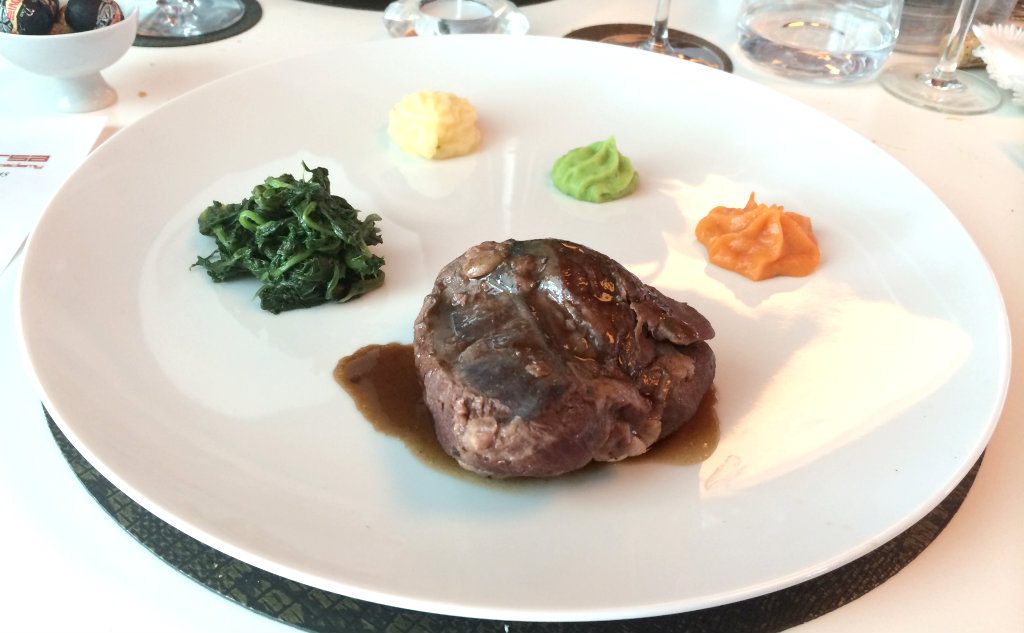Beef
Cattle are slaughter animals divided into two main categories: the calf and the adult bovine. The veal calf has pink, tender meat, with a low % of fat, with a fine grain and low texture because it has only been fed on milk, which lends itself to quick cooking. The adult bovine has red, firm meat, with muscles 'prezzulated' with fat, which lend themselves to heavy cooking.
In varying proportions according to the cut chosen, it is a food rich in proteins of high biological value, i.e. of a nature very similar to human protein and therefore easily utilised by our bodies to fulfil metabolic processes.
We learn to read the label...
Classification
A = uncastrated male bovine animal
B = non-castrated adult male (Bull)
C = castrated adult bovine
D = cow (female who has given birth)
E = heifer (female that has not calved)
V = calf (bovine up to 8 months)
Z = calf (bovine between 8 and 12 months)
Conformation
E = excellent
U = excellent
R = good
O = good enough
P = mediocre
Greasing
1 = very poor
2 = poor
3 = medium
4 = abundant
And the Quality of Meat?
Unlike in other cases, here talk of 'Quality' does not affect the end result, but only identifies the finest cuts. That is, First Quality meat will cost more than Second and Third Quality meat, but in terms of preparation, the end result depends on the skill of the chef. In fact, it is possible to obtain extraordinary dishes even from Third Quality meat. The point is only that higher-quality meat has a shorter cooking time, whereas lower-quality meat is better suited to slow cooking such as braising. The result in practice is the result of the cooking method.

First Quality
1 Loin
2 Thread
3 Rump
4 walker
5 Outer rump
6 Walnut
7 Inner rump
Second Quality
12 Blanket or Priest's Hat
13 Shoulder walker
14 Royal Cut
15 Sub-shoulder
Third Quality
10 Belly
16 Front Jeret
18 Chest
19 Neck

Tartare
The classic preparation calls for egg yolk and a touch of mustard, and if possible the meat should be knife-cut. I propose 'Pensiero Infinito' Langhe Chardonnay DOC 2000 14 % from the Bricco Maiolica winery, a pure Chardonnay from their oldest vineyard. The must ferments in French barriques for around 50 days, then begins the long period of enrichment in dry extracts, pulp and intensity of flavour through weekly batonnages for a good 30 months, without racking and keeping the yeasts in suspension throughout this period. The result is an elegant, rich and complex wine that is well suited to this dish.

Thread
There are so many ways to prepare fillet steak: with green pepper, in a crust, Wellington style, in red wine, with porcini mushrooms... so obviously the wine can vary as the preparation varies. However, a structured red wine can enhance the succulence of any fillet. With this in mind, I suggest the 'Lagrain Sanct Valentin' Alto Adige Lagrain 2007 13.5 % from the St. Michael Eppan winery. I chose this wine because it has a good residual sugar that makes it 'chocolatey' and powerful, but at the same time it retains a beautiful acidity that is well suited to this cut of meat.

Braised meat
Braised beef is an extraordinary preparation that requires many hours of cooking, herbs, spices and a good red wine to be special. It is made with different cuts, I particularly like the one with heifer cheek. The 'Cumot' Nebbiolo d'Alba Superiore DOC 14 % from the Bricco Maiolica winery is perfect. In the local tradition, Nebbiolo d'Alba is obtained from a varied area on the right bank of the Tanaro, near Alba, between the Barolo and Barbaresco areas. Here Nebbiolo retains a good personality, but is softer, less tannic, and more delicate in taste. Matured for about 18 months in small oak barrels, Cumot is a pleasant, long-lived wine.
